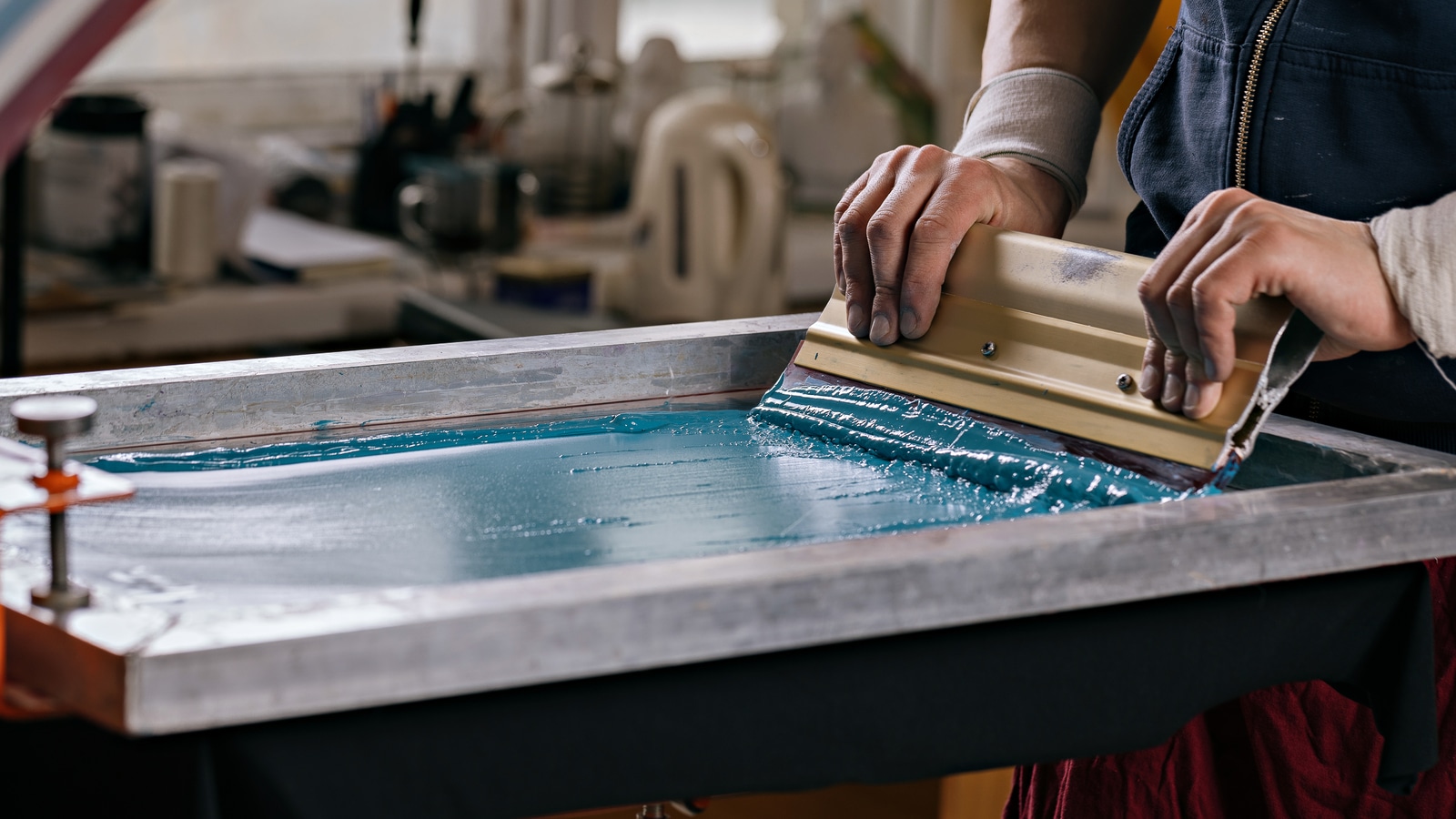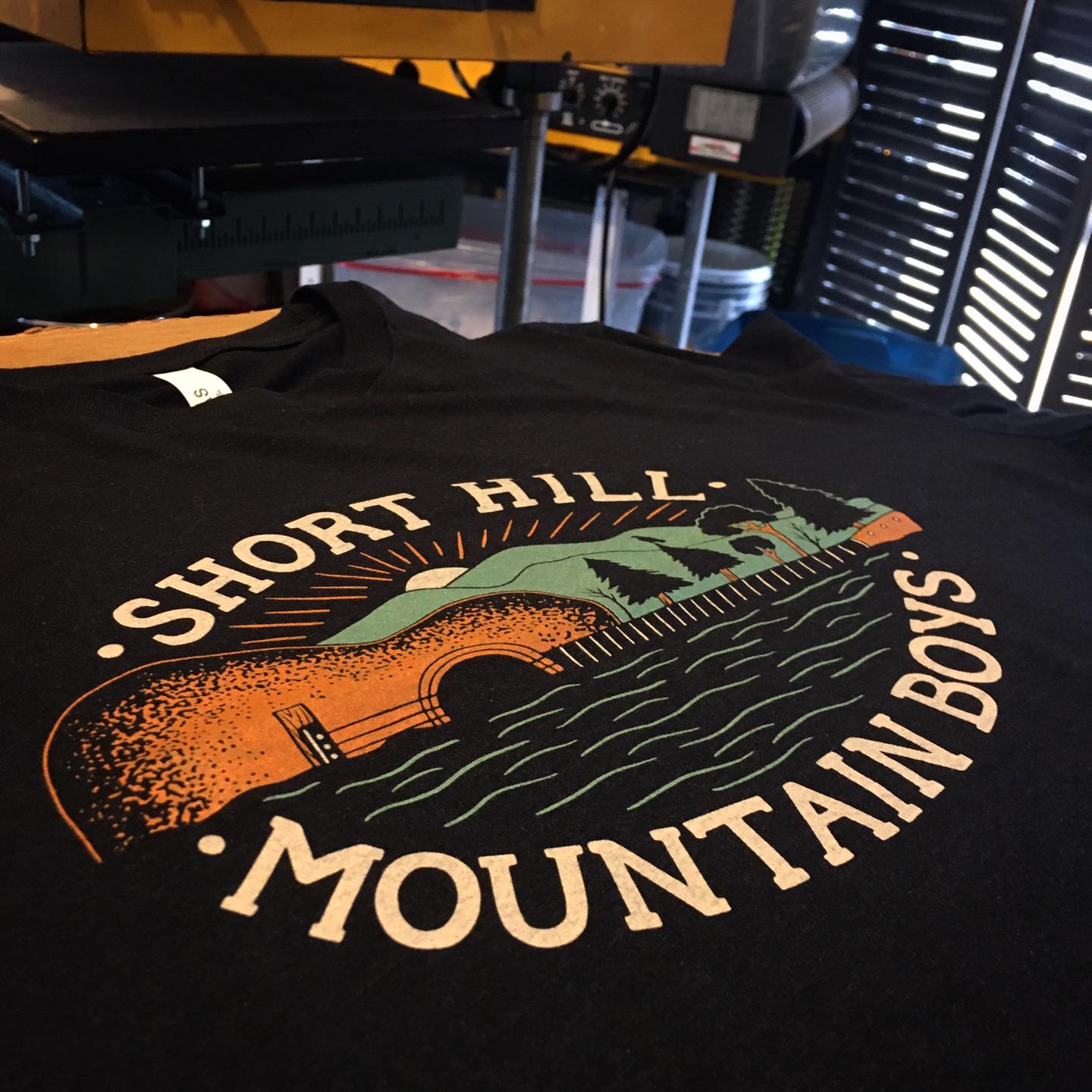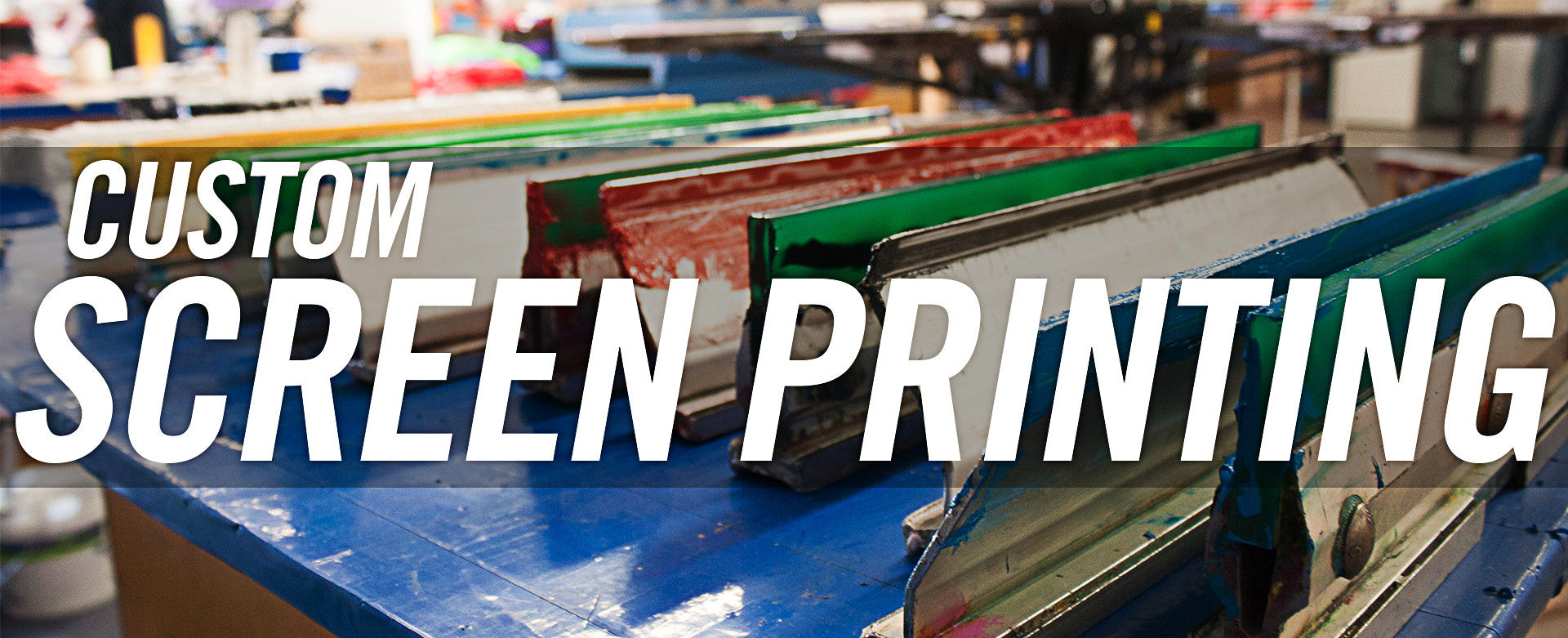Best Local T-Shirt Printing for Personalized Apparel
Best Local T-Shirt Printing for Personalized Apparel
Blog Article
Screen Printing Uncovered: Everything You Required to Know About Tee Shirt and Garment Printing Strategies
If you've ever before questioned how those vibrant layouts wind up on your preferred tees, you remain in the ideal area. Screen printing is an interesting technique that incorporates art with strategy, supplying limitless opportunities for creative thinking. Comprehending the principles, from devices to ink choices, can considerably affect your outcomes. Prepared to check out the essential aspects that make display publishing an art form? Allow's uncover the information that can boost your jobs.
The Essentials of Display Printing: Exactly How It Functions
When you plunge into screen printing, you'll uncover it's both an art and a science. At its core, display printing entails creating a stencil, or display, that allows ink to go through only in particular areas (screen printing kit). You begin by picking your style and preparing your screen with a light-sensitive emulsion. When you subject this solution to light, it hardens, leaving your design as a negative area.
Placement the screen over the material, after that utilize a squeegee to press ink via the display onto the garment. Each action is essential, and grasping them will certainly boost your screen printing skills, transforming easy garments into unique, meaningful items.
Kinds Of Screen Printing Strategies
Once you comprehend the essentials of display printing, it's time to check out the different strategies that can raise your designs. One popular technique is traditional screen printing, where ink is pressed with a stenciled screen. This method is terrific for vibrant, vivid shades. There's water-based ink printing, which offers a softer feeling and is environmentally friendly, yet it requires a various method to treating.
One more alternative is plastisol printing, known for its toughness and vivid shades, making it a favored for several brands. Experiment with halftone printing to produce gradient effects and intricate designs.
Crucial Equipment for Display Printing
To accomplish stunning outcomes in display printing, having the right tools is essential. You'll need a tough screen printing framework, which holds the mesh that transfers your style onto the garment. Next, spend in top notch squeegees; these are necessary for using ink equally throughout the display.
Selecting the Right Inks and Products
When picking inks and materials for screen printing, you require to think about the type of ink that works best for your project. Think regarding textile compatibility to ensure your designs look excellent and last long. Likewise, explore environmentally friendly ink alternatives to make your printing procedure more sustainable.
Types of Screen Inks
Selecting the ideal screen ink is vital for attaining lively, sturdy prints that meet your job's demands. There are several sorts of display inks to check out. Plastisol ink is popular for its versatility and convenience of use, offering excellent shade opacity on dark textiles. Water-based ink, on the various other hand, supplies a softer feel and is eco-friendly, making it ideal for those seeking to minimize their environmental impact. Discharge inks remove dye from the textile, leading to a soft, classic appearance yet require certain handling. Specialty inks, such as glow-in-the-dark or metallic, can include special effects to your layouts. Evaluate your project demands and select the ink that lines up ideal with your wanted end result.

Textile Compatibility Considerations
Recognizing fabric compatibility is crucial for achieving top notch display prints, especially considering that various products react uniquely to various inks. When choosing inks, think about the material kind-- cotton, polyester, or blends. For cotton, water-based inks function well, using gentleness and breathability. Polyester, on the other hand, usually calls for plastisol inks for much better attachment and vivid colors. You could require to use a combination of both kinds if you're printing on blends. Constantly examine your inks on example fabric to ensure they adhere appropriately and keep color stability. Furthermore, remember that fabric weight and appearance can impact the final outcome, so choosing the right ink and product combination is crucial for your project's success.
Eco-Friendly Ink Options
Eco-friendly inks are coming to be a prominent selection for screen printers that want to minimize their ecological impact while preserving high quality. When choosing inks, consider water-based inks, which are much less damaging and easier to clean up contrasted to standard solvents.
Additionally, look for inks made from renewable energies, such as soy or vegetable-based options. By choosing the right inks and products, you'll not just develop spectacular layouts however likewise contribute to an extra sustainable printing process. Make the switch, and your prints will reflect your commitment to the setting!
Preparing Your Design for Screen Printing

File Layout Demands
To assure your style looks sharp and vibrant on textile, you'll require to pay very close attention to file format demands for screen printing. Begin with vector documents like AI or EPS, as they can be scaled without shedding top quality. If you use raster photos, go with high-resolution files, such as TIFF or PNG, ideally at 300 DPI. Stay clear look at this site of using JPEGs, as they can shed clarity when resized. Make certain your style has a transparent history to avoid unwanted white sides on your prints. Maintain shade modes in mind; CMYK is basic for screen printing, so transform your RGB creates appropriately - screen printing kit. By following these guidelines, you'll set your artwork up for an effective print.
Color Separation Techniques
Color separation is a crucial action in preparing your layout for screen printing, and grasping it can substantially boost your print quality. You'll need to break your style into individual colors, as each color requires a separate display during printing. Begin by identifying all the shades in your design and produce layers each. You can use software program like Adobe Photoshop or Illustrator to separate and different shades successfully. Be particular to conserve each layer as a different documents, commonly in a style like TIFF or PSD. This accuracy not only assures exact shade representation yet see this here additionally enhances the printing procedure. By taking notice of shade splitting up, you'll attain expert and lively outcomes in your screen-printed garments.
Resolution and Size
Achieving the very best cause display printing begins with ensuring your style has the right resolution and dimension. Preferably, your art work needs to go to the very least 300 DPI (dots per inch) for sharp, clear prints. If you use reduced resolution, your final product might look pixelated and amateur.
When it pertains to dimension, think about the measurements of your print area. Style your artwork to match the last print dimension, preferably developing it in the actual dimensions you'll be publishing. In this manner, you'll avoid any type of unforeseen scaling issues.
Always check your layout in both vector and raster layouts. Vector graphics can be scaled without losing top quality, making them optimal for screen printing. Preparing appropriately will guarantee your design looks amazing on every garment!
Step-by-Step Display Printing Refine
Display printing is a dynamic procedure that enables you to create dynamic designs on different surfaces. To obtain begun, you'll require a display, solution, and your selected ink.
Pour ink onto the display and use a squeegee to press the ink through the pattern onto the material. Lift the screen very carefully and allow the print dry. You've successfully display published your layout.
Tips for Effective Screen Printing Projects
While you're diving into your display printing tasks, bear in mind that preparation is essential to success. Beginning by gathering all your products-- inks, garments, screens, and squeegees. A tidy office aids protect against unwanted errors, so clean prior to you start.
Next, confirm your art work is high-resolution and correctly sized for your garment. Check your display for correct exposure and clean it completely to avoid smudges. When mixing your inks, adhere to the maker's guidelines to accomplish the ideal uniformity.
During printing, use also pressure with your squeegee for regular outcomes. Do not rush; take your time to confirm each print fulfills your standards. After printing, allow your garments completely dry totally prior to managing or packaging them.
Finally, constantly maintain a sample of your help future reference. This means, you can analyze your progress and improve your methods in time. Pleased printing!

Frequently Asked Questions
Just how Long Does It Require To Set up a Display Printing Task?
Establishing a see this page screen printing task usually takes about thirty minutes to an hour. You'll prepare the displays, mix inks, and change journalism. The time differs based upon intricacy and experience, so remain arranged!
Can I Print on Various Textile Keys In Making Use Of the Very Same Method?
Yes, you can print on different textile types using the very same technique, however you'll require to change your settings and inks. Some textiles take in ink in a different way, so experimenting assurances the very best outcomes for every material.
What Are Typical Mistakes to Stay Clear Of in Display Printing?
When screen printing, avoid typical blunders like using the incorrect ink, disregarding correct exposure times, or skipping pre-press checks. Constantly test your configuration and preserve tidy screens to ensure high quality outcomes each time.
How Can I Correctly Tidy and Maintain My Display Printing Devices?
To effectively tidy and preserve your display printing devices, you need to regularly wash screens with suitable solvents, check mops for wear, and assure all devices are stored dust-free and dry. Consistency prevents expensive repair work and improves efficiency.
Is Screen Printing Environmentally Friendly Contrasted to Various Other Approaches?
Screen printing can be much more eco friendly than other methods, particularly if you use water-based inks and eco-conscious products. By selecting sustainable supplies and methods, you reduce waste and lessen your effect on the world.
Screen Printing Uncovered: Everything You Need to Know Regarding Tee and Garment Printing Strategies
At its core, screen printing includes developing a stencil, or display, that allows ink to pass through only in certain locations. Position the display over the fabric, after that make use of a squeegee to press ink through the screen onto the garment. One preferred technique is conventional screen printing, where ink is pushed through a stenciled display.When selecting inks and products for display printing, you require to take right into account the kind of ink that functions ideal for your project.
Report this page